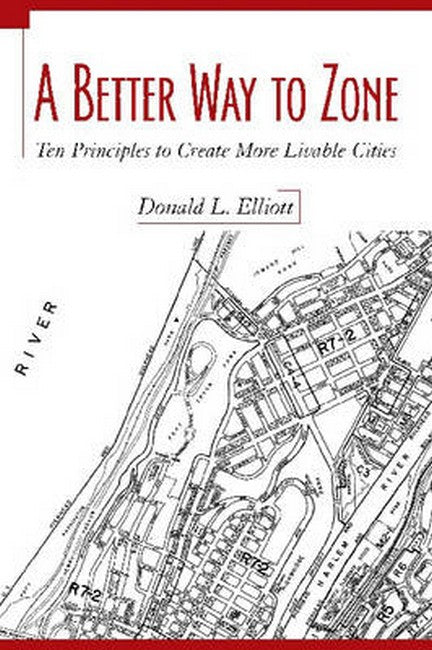Table of Contents--Elliott
Chapter 1: A Brief History of Zoning
¿Euclidean¿ Zoning
National Zoning and Planning Enabling Acts
Planned Unit Developments (PUDs)
Performance Zoning
Form-Based Zoning
The Result ¿ Euclidean Hybrid Zoning
Chapter 2: Failed Assumptions
A Few General Rules Will Do It
Separate the Uses
Greenfield Standards are Better
Variances Will be Rare
Non-conformities Will Go Away
Zoning Rules Need to be Static
Zoning is a Technical Matter
Chapter 3: Evolving Land Use Drivers
The Market
Tax Limits
Transportation Systems
Housing Affordability
NIMBYism
Chapter 4: Governing Well
Effectiveness
Responsiveness
Fairness
Efficiency
Understandability
Predictable Flexibility
Chapter 5: The Legal Framework for Change
Due Process
Regulatory ¿Takings¿ of Property
The First Amendment
Equal Protection
Vested Rights
Vagueness
Pre-Emption by State and Federal Law
Chapter 6: What Have We Learned?
Nine Lessons
Focusing on the Process of Zoning Change
Chapter 7: A Better Way to Zone
More Flexible Uses
The Mixed-Use Middle
Attainable Housing
Mature Area Standards
Living With Non-Conformities
Dynamic Development Standards
Negotiated Large Developments
De-Politicized Final Approvals
Better Webbing
Scheduled Maintenance
What About the Other Good Ideas
Chapter 8: The Way Forward
Audit for Specifics
Prioritize for Political Will
Draft for Integration
Illustrate How
Adopt the Possible
Suggested Reading List
Bibliography
Description
"Elliott's concise accounts of the origins and logic of most cities' 'Euclidean Hybrid Zoning' would serve as a good primer on the subject for students or citizens new to the field...I think the mantra about simplicity is the most important part of the book, and completely agree with Elliott that 'the more the public knows, the better they can participate at the policy- and rule-making level.' Let's hope his call for simplicity and transparency is heeded."

